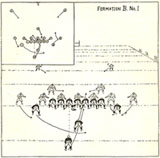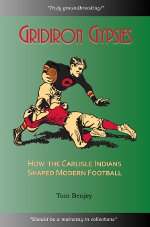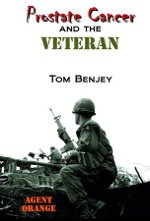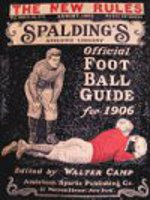Old friend Tex Noel forwarded me a recent article about a new formation from AFCA Weekly. In that article Leon Feliciano, Head Coach of Tomales (CA) High School, states that his Tsunami formation is based on the double wing and provides photos of both formations (below).
The first thing I noticed is that Feliciano used a balanced-line configuration with the quarterback directly behind, if not under, center as the basis for his Tsunami. Pop Warner’s fully-evolved double-wing, which he labeled Formation B in his 1927 book, in sharp contrast, uses an unbalanced line and a direct snap to a running back. (below)
To me, the Tsunami is more like Warner’s single-wing than his double-wing because it employs only one wingback. Warner’s fully-evolved unbalanced-line single wing as depicted as Formation A (below) in his 1927 book is closer to the Tsunami than Warner’s double-wingback formation, but is different, especially with regard to the positioning of the quarterback. Where Warner moves his quarterback along the line to just behind the tackles and renames the position as blocking back.
Warner’s 1912 book sheds little light on this question because Warner had shifted to running only direct snap formations in 1910. He does include one set of plays with the quarterback directly behind center in what he calls the Regular Formation (an incarnation of the T Formation).
However, in his correspondence course Warner started marketing in 1908, he includes a set of plays run from the End-Back Formation in which the right halfback is placed outside the right end as a wingback without moving the quarterback from behind center. The difference between this formation and the Tsunami is that Warner positioned his left end in the backfield about where he later placed his blocking back. (Rules allowed five men in the backfield at that time.) The extra man in the backfield and the resulting unbalanced line are the chief difference between the End-Back Formation and the Tsunami.
Warner’s next wingback formation, which appears unnamed in play number 8 to 16 in the 1910 or 1911 (the year isn’t clear) Offense pamphlet supplement is a direct-snap single-wing with a balanced line. If Warner moved his blocking back to directly behind the center, it would be very similar to the Tsunami.
I hope this little walk down Memory Lane helps place the Tsunami with its historical predecessors.
















